How to cook yucca root on the stove top! Yuca is a carb-o-licious versatile root vegetable used in all sorts of comfort food recipes worldwide. Let’s dive on in!
When I went to the Dominican Republic a few months ago, I was blown away by the cuisine. Aside from the wide range of saucy slow-cooked meats (my favorite!), there was an abundance of fresh salads and stewed vegetables.
I became hooked on cassava and couldn’t stop eating the stuff. I was determined to incorporate it into my own cooking as soon as I got home, but then something happened: I couldn’t find yucca root anywhere.
Fun Facts About Cassava, or Yuca:
Cassava is more commonly called, “yuca” in the U.S. The root is often misspelled “yucca,” which is actually a shrub-like plant. Indeed, yuca is the actual starchy root vegetable that you eat. I use both terms throughout the post for SEO purposes. Winky face. 😉
Yuca root is very dense and starchy and is used just like a potato in many delicious dishes worldwide. It has a mild flavor, which makes it versatile for incorporating into numerous types of recipes. Basically, it can go anywhere a potato can go…and then some!
When I first started my search for yuca, I had a difficult time locating it. Most grocery stores put it near the other less-commonly used root vegetables. The grocery store I shop at keeps them next to the turnips, rutabaga, kohlrabi, and ginger.
Origin of Yuca Root:
The root is native to Central and South America, and you’ll commonly see it incorporated in to a variety of dishes in Latin American countries, Africa, Southeast Asia, and the Caribbean Islands.
Most roots can be consumed raw, but yucca is one of the few roots that must be cooked, as the peel contains cyanide. Another fun fact: yuca is where tapioca pearls and tapioca flour come from!
Although the root is very tough to peel, once you break through the outer layer, it can be made into fries, added to soups, stewed on its own with butter, salt, and spices, or even pureed and made into custard-like desserts and cakes.
This versatile root is the third largest source for carbohydrate in the tropics. Full of Vitamin C, potassium, folate, and fiber, yucca doesn’t boast the same high-octane antioxidant properties as other roots such as beets, but still does its part in boosting your immune system and keeping your digestive system regular.
How to Make Yucca Root:
1. Chop off both ends of the yucca root using a sharp knife.
2. Using a sharp knife, carefully slice down the full length of the yucca root. Be sure to cut through both the brown peel and the thick white layer.
3. Start at the thicker end of the root (if one side is thicker) and work your thumbs under one side of the cut. Be sure to get underneath the first white layer, too as it will help you peel the skin off in large chunks. Once you’re underneath the peel, you can work your thumbs down the length of the root, peeling the skin off like a jacket.
4. Once the root is peeled, chop it into chunks.
[Alternative method: You can also use a vegetable peeler!]
5. Fill a medium-sized pot with water and bring it to a full boil. Place the hunks of peeled yucca root in the boiling water, and allow them to cook for 15 to 25 minutes, or until the root is very soft when poked with a fork. The root will turn from white to yellow once it has cooked.
6. Cut the yuca chunks in half length-wise and remove the hard spine from each piece.
Now you get to use the yuca however you would like! I’m partial to sea salt, butter, and sautéed garlic, myself! Maybe a sprinkle of cheese. 😉
Every once in a while, I come across a yuca that has out-stayed its welcome at the grocery store. It can be difficult to know whether the root is fresh or not, since it is hidden underneath such thick skin. Here’s how you can tell
How to Tell When Yuca is Bad:
When you peel the root, it should be completely white. If there are dark grey/black lines, specks, or brown areas, the root has gone bad. You can see what I mean in this photo:
Some oxidation is normal after you peel a yuca, but it shouldn’t be discolored as soon as you peel it.
Can I Cook Yuca Root in a Pressure Cooker?:
In a word, YES! Cooking cassava in an Instant Pot is super quick and easy. To do so, follow my tutorial on How to Cook Yucca in the Instant Pot.
Serving Options:
Serve with some sauteed garlic and butter, or try one of these recipes:
- Bibingka (Cassava Custard) from Saveur
- Coconut Cassava Bars from Blahnik Baker
- Paleo Egg Rolls from Predominantly Paleo
- Sancocho Stew from The Noshery
- Baked Yucca Fries with Grilled Banana Ketchup from Spoon Fork Bacon
- Crispy Baked Yuca Fries from The Healthy Maven
Yucca. Make it your new russet potato.
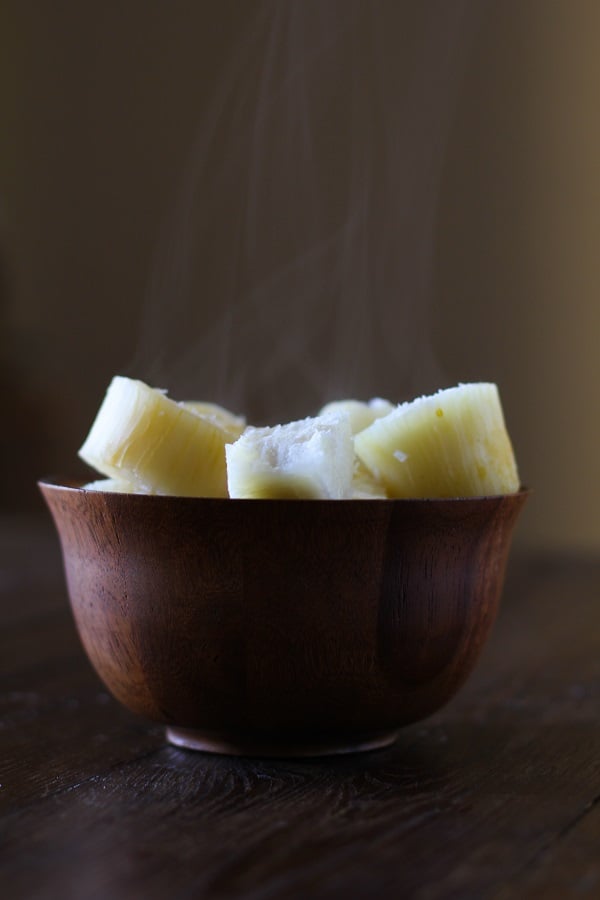
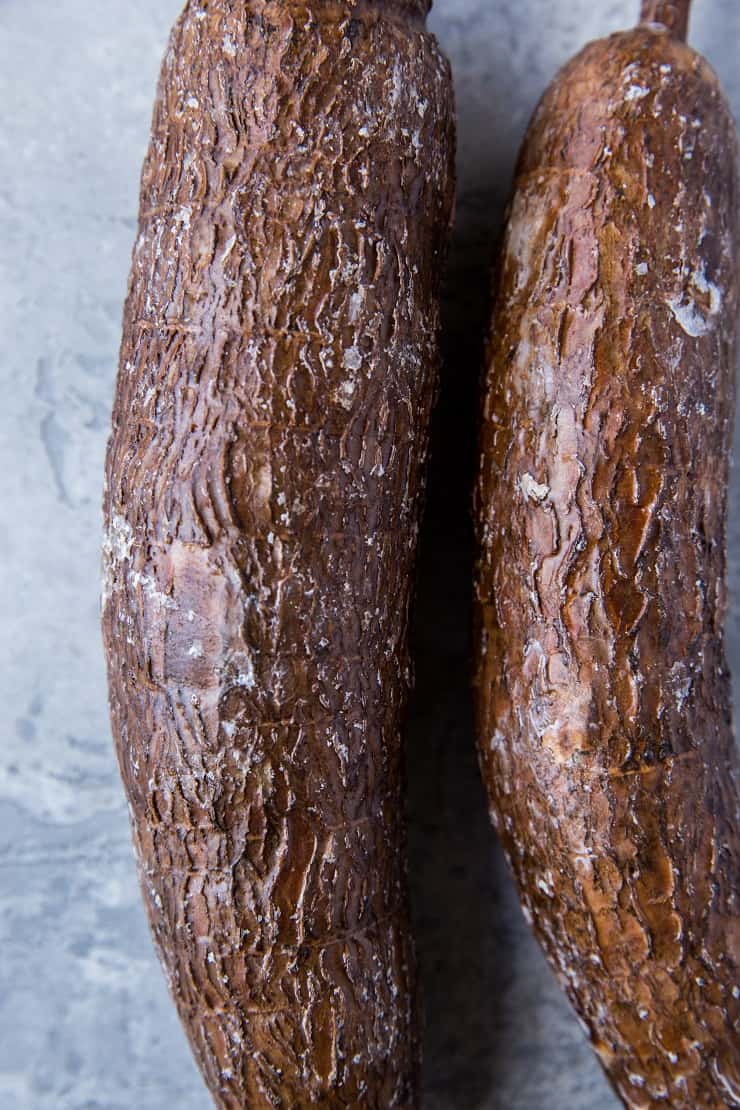
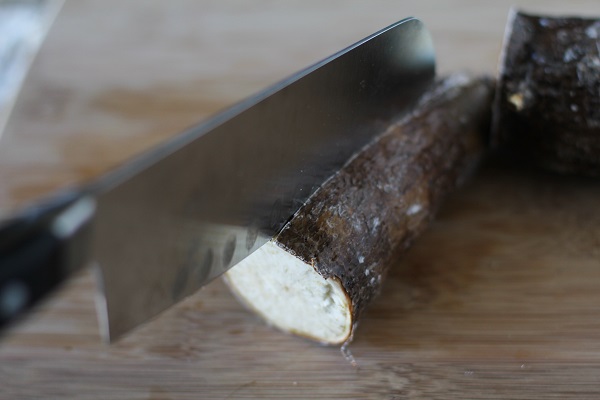
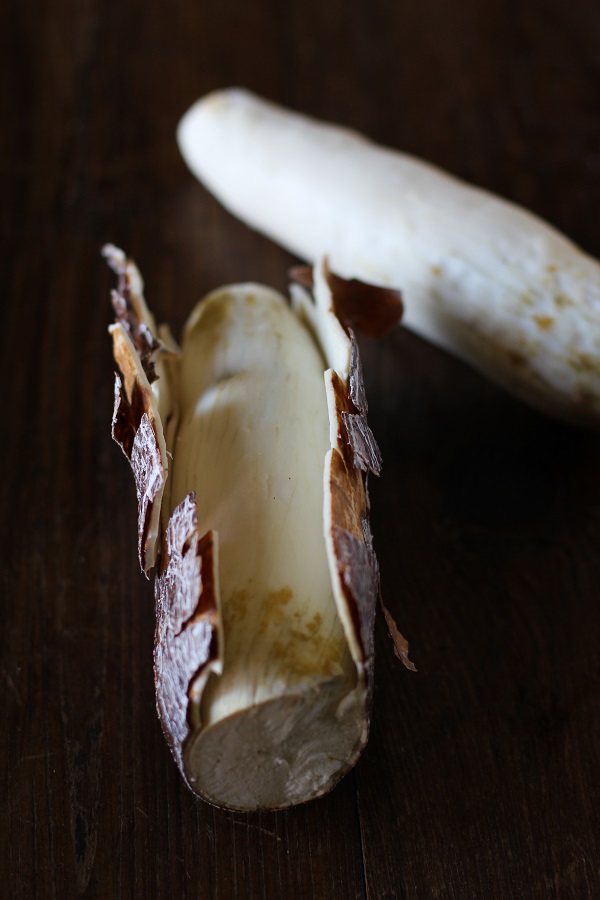
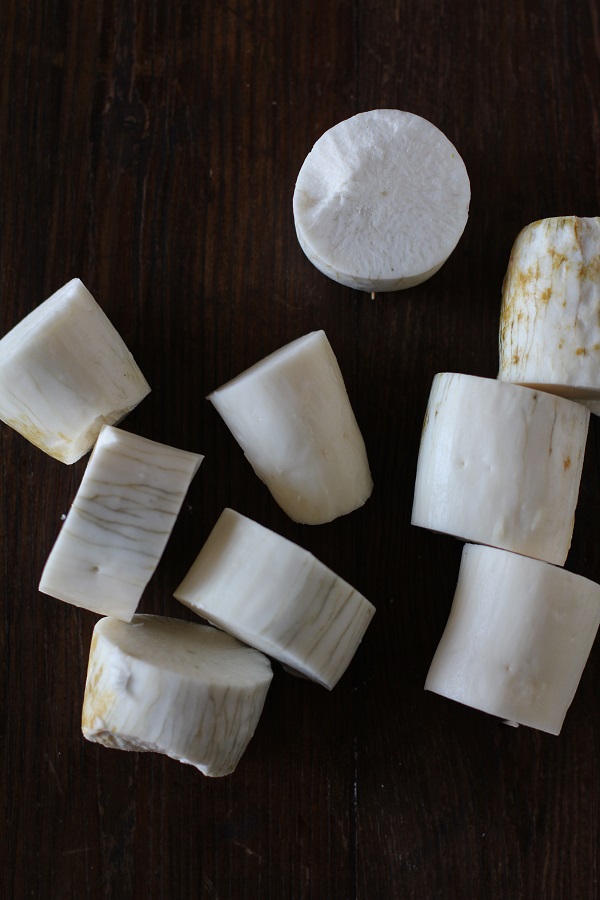
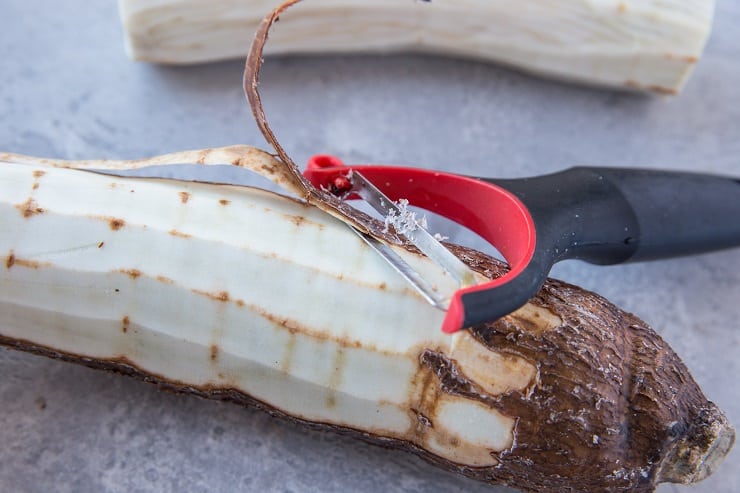
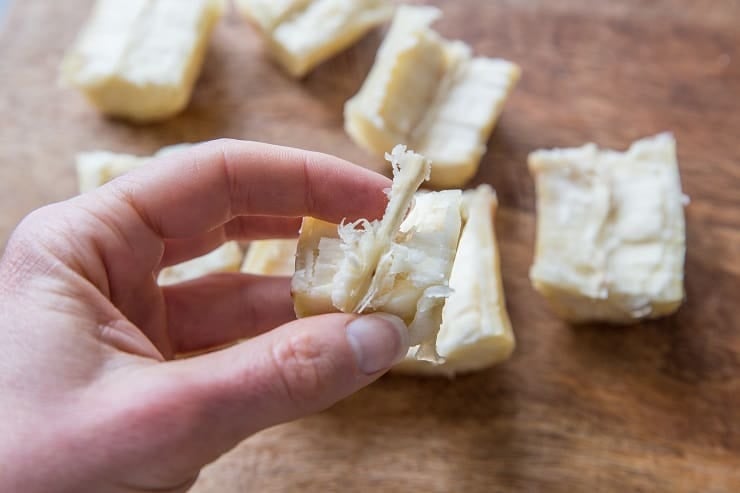
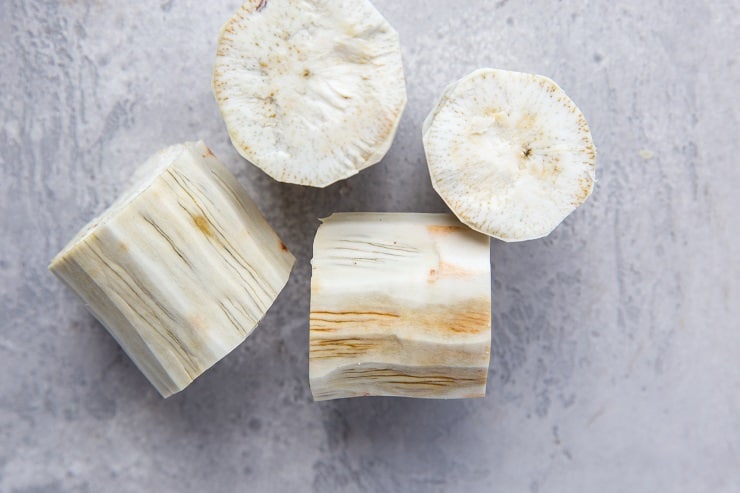
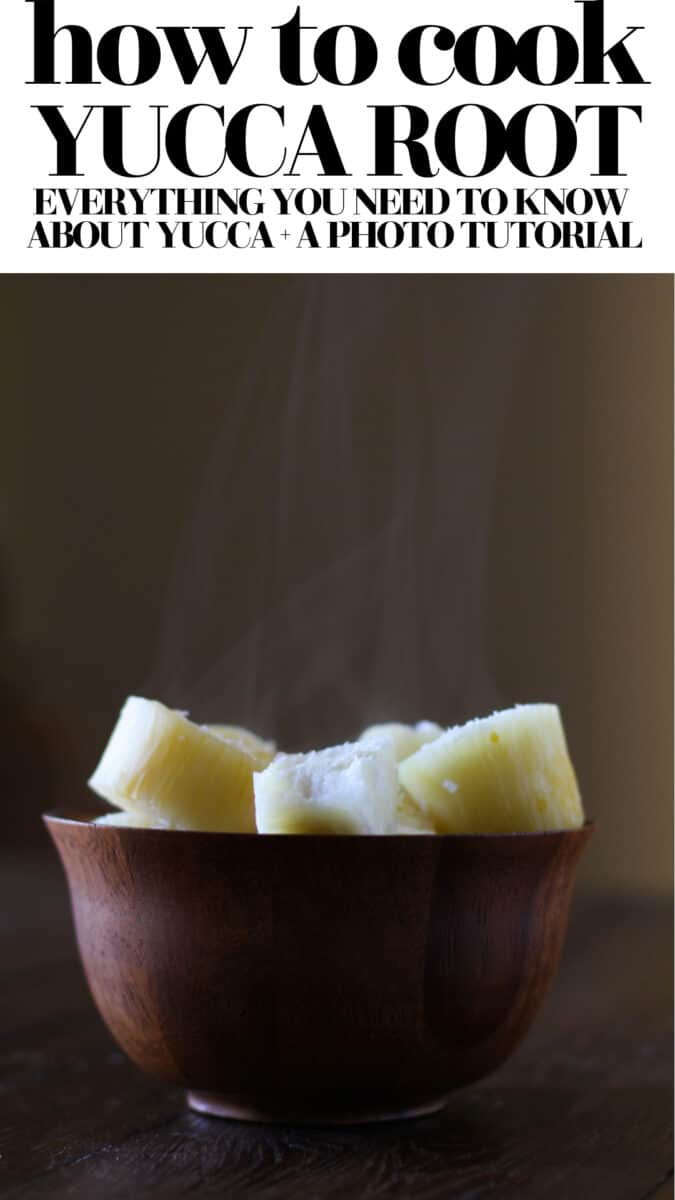

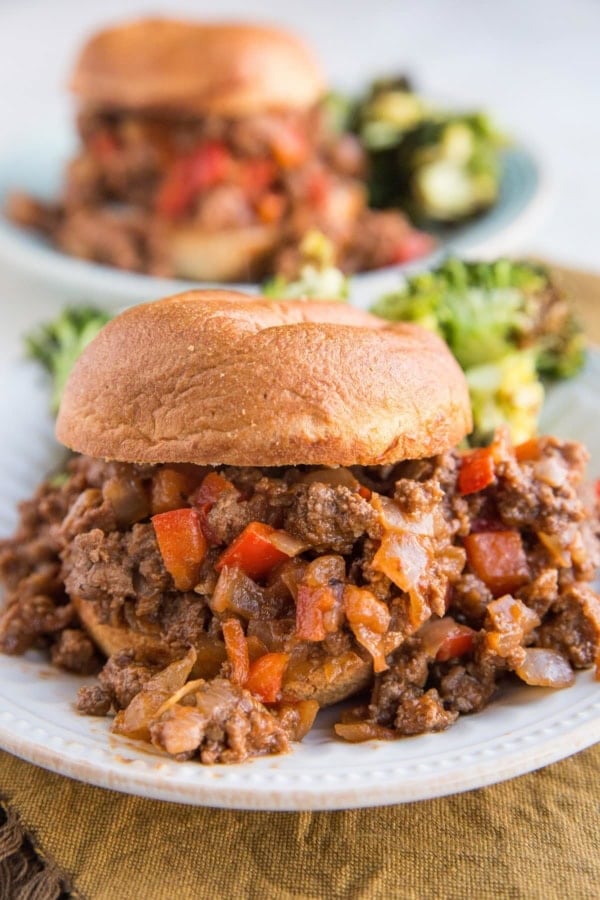
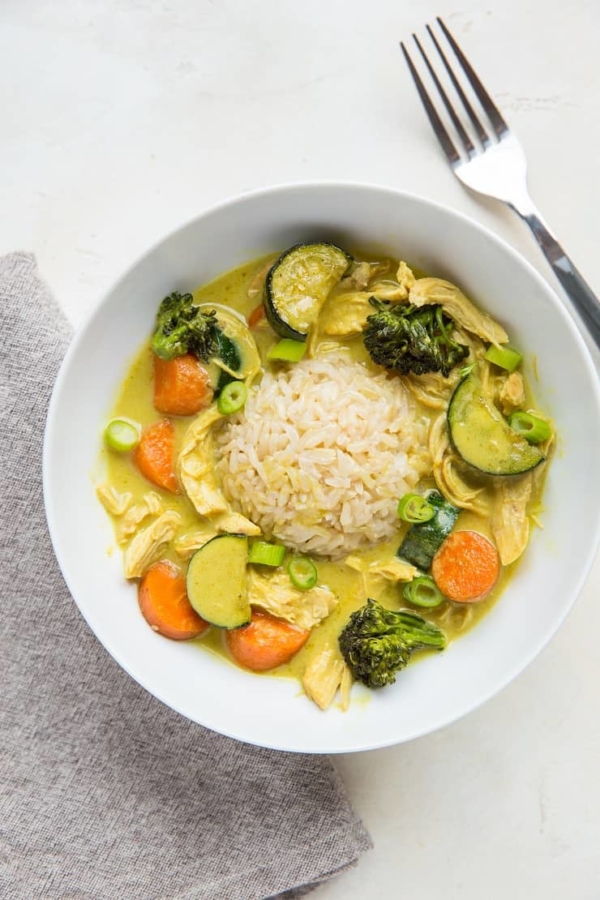
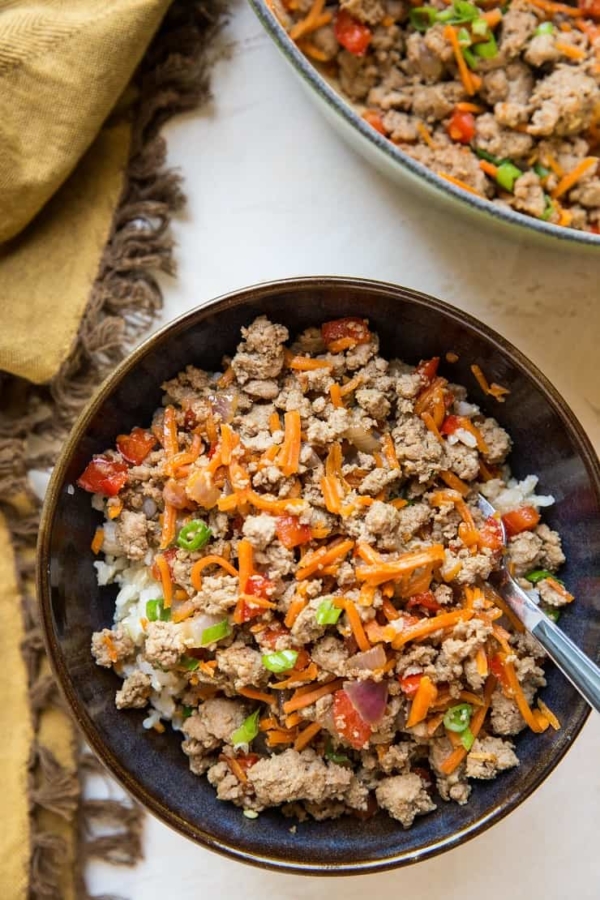
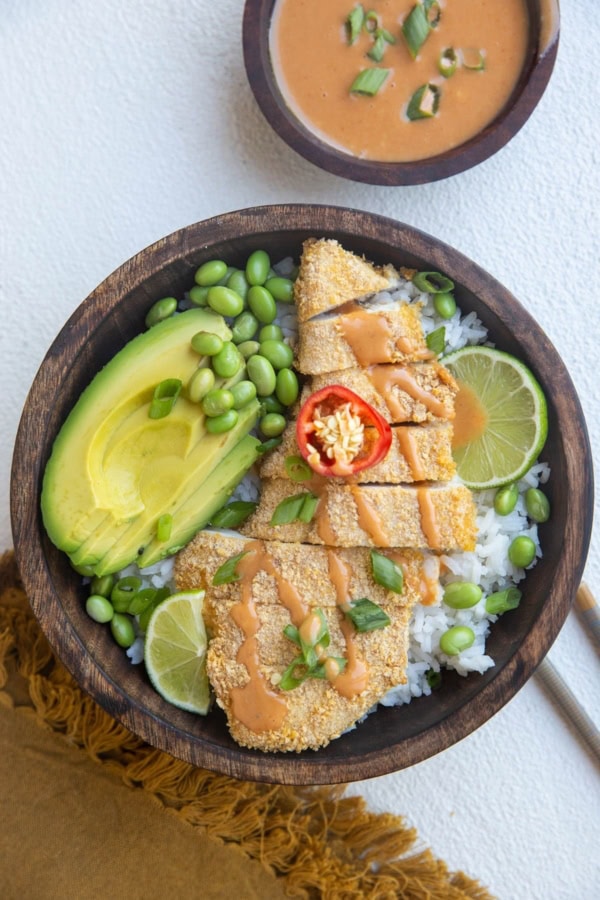









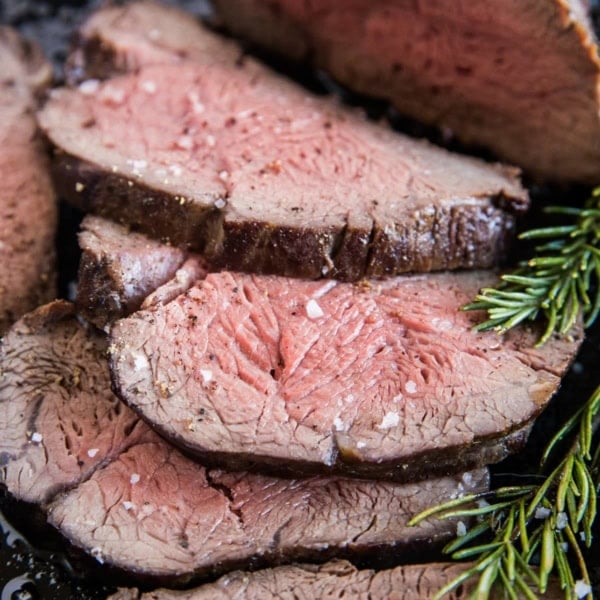
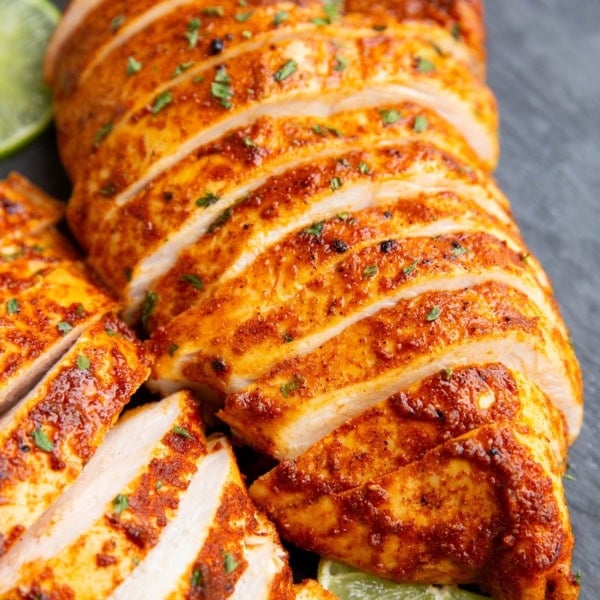
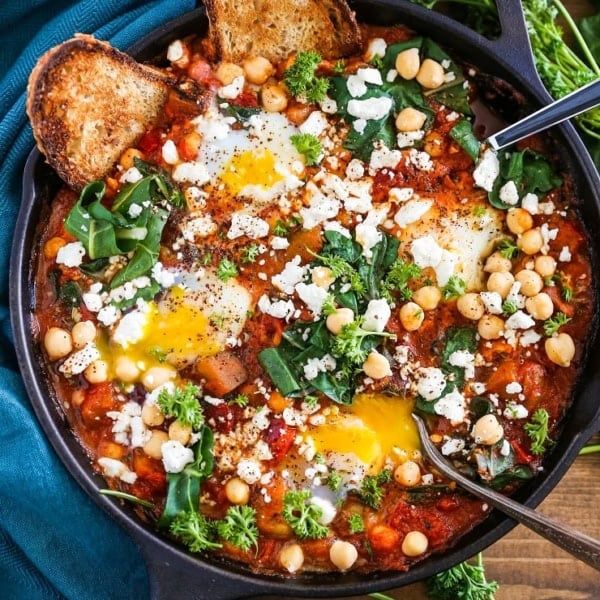
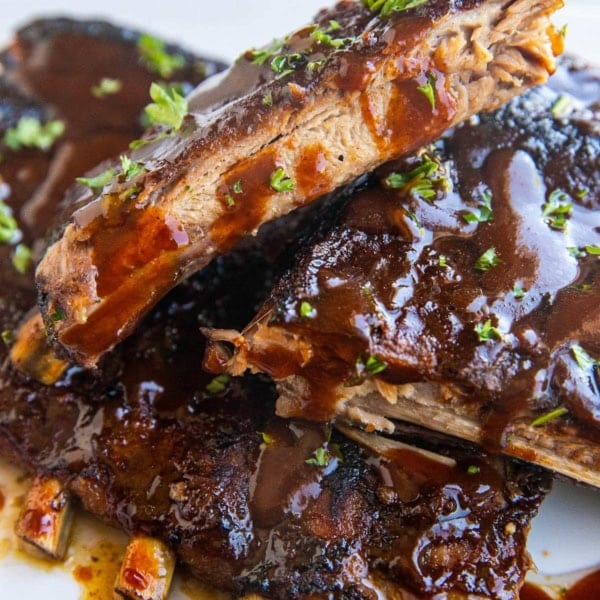
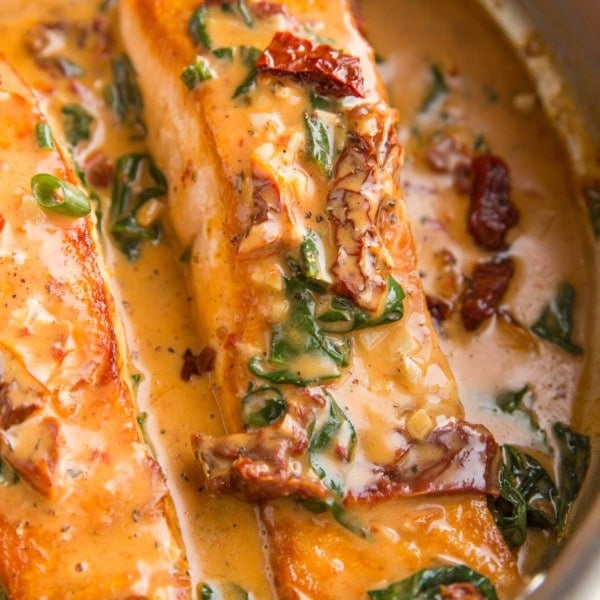
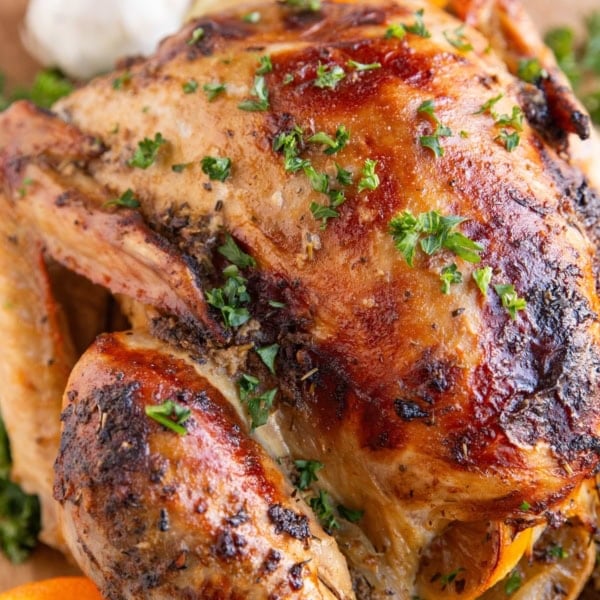
Bad idea to misspell yuca as “yucca” on purpose, since they are two different plants, the roots of both plants are used, but the precautions are not the same for the two.
This type of misinformation can have unfortunate results. Negative SEO; not worth it.
Hi Julia, this will be my first time preparing yuca myself! I was wondering, in your section on How to tell if yuca is bad, you mention that presence of dark lines means they’ve gone bad. But in Step #4 the chunks of yuca have those lines… so I’m a bit confused. Are those just from oxidation, or did you cut up some bad yuca root just to show the size of the chunks? Thank you!
Hi Emily,
It’s when the dark lines are thick and breach the surface of the root. If they’re present on the top of the root, it’s fine but if the majority of the root is brown instead of white, not fine 😉 Hope you love it! xoxo
There is an easier way we peel Cassava in Trinidad and Tobago. Starting at the wider top gently cut through the outer layer in a spiral. Then take hold of the top cut and the skin rolls off in a spiral.
When I recently went to a grocery store, I saw this and asked a salesperson about this vegetable. He said, its Yuca. I was astonished as I haven’t heard about it before. I brought it home, but I think the one that I bought is not in good condition. It has the same marks. Anyways, I will buy one next time that is good and will make yuca fries. Thanks for the information.
I recently discovered that I had some “yucca” root that I had purchased from a health food store in 2007. A friend on FaceBook who lives in Nigeria (I think) had posted a pic of her cooking cassava/yuca root. So I searched for these two spellings on the web and they are two different botanical species. The Yuca root can be eaten but the Yucca root not so much.
Will pressure cooking help with the elimination of the cyanide?
yuca frita in Peru. Peel and boil as mentioned before, then cut in thinner pieces and fry. Served as appetizers with Huancaina sauce, which is based on a type of Peruvian aji pepper and queso fresco, crackers and I don’t know what else, blended together. I buy the packets of it already prepared at the supermarket when I go back to Peru. Yum yum!
Sounds absolutely amazing, Joni! Thanks for sharing!
Another point about the yuca is that it has a stiff spine down the center, that can impale the eager eater in the roof of the mouth. It’s best to remove this after boiling, before serving.
Also, I have been using a potato peeler too. I’d like to try the peeling method suggested by the post author, though!
Thank you for this article, and all the comments.
(Not a toot…It’s a root, hee hee! I love that correction…)
This is a great article. I’ve been looking for how to peel and cook my cassava for a meatball recipe. I followed instructions for roasting it, but the root came out quite dry.
The only thing is that, as the article progressed, the spelling was changed from “yuca”, which is correct, to “yucca”, which is an entirely unrelated plant whose root can be used as a soap.
I just thought you’d like to know, lest someone buy the wrong root. Both roots are available in my local grocery store and I have to watch to make sure I buy the correct root for my recipes because many produce people mislabel the roots..
Sorry, it’s certainly not a toot… But rather a root.
Yuca, friends, Y – U – C – A.
Yucca does not produce the edible toot discussed above; yucca is a plant akin to Spanish Bayonet.
Yuca (YOO-kuh), also popularly known as, and widely prepared and consumed as, cassava in Hispanic cuisine, is also fairly widely recognized as manioc, and is the source of tapioca, famously used in pudding, and now, popularized in Thai bubble teas.
Remember, it’s yuca, NOT yucca.
Thank you! This clears up some confusion.
I grew up eating yuca in Venezuela. Now in the US, I use yuca instead of potatoes when I make roast in the slow cooker.?
That sounds amazing! I’ll have to start incorporating yuca into my crock pot meals as well 😀
Wow most of these comments are over 10 years ago. 🙂
I lived in Mexico and eat Yucca root numerous times in soups. I now would like to use it with a chuck roast in an instant pot.
Will follow your peeling instructions and add it to my roast with potatoes, carrots, and onion, and even a bell pepper.
That sounds awesome, Charles! You’ve inspired me to try cooking Yucca in my Instant Pot too. I hope you enjoy! xo
I just peel it with a good veggie peeler and it’s simple! One of my fave roots.
@Mel, I just tried yuca ,for the fist time & I absolutely Love it .I am trying to maintain a healthy eating habits and this is great.Thanks to all for advice & recipes.
so do you boil them before you can prepare them in any dish? Like if I want to make them into fries, do I boil them first and then slice and bake them?
Hi Mellissa, that is correct. You’ll want to peel the thick skin off, then boil them, and then roast them for fries. Here’s a great recipe for yuca fries!: http://www.thehealthymaven.com/2015/03/crispy-baked-yuca-fries.html
I love Yuca, and my grandmother, who owned a restaurant with her dad in Puerto Rico, was the most amazing cook ever! She used to boil the Yuca the way that Marbel described, after soaking it overnight. She used to make fried stuffed Yuca by grating or mashing it after it was cooled and drained, forming small meatball sized patties out of them mixed with a little seasoning. She would flatten it a little, put a small amount of grated onion, and a cube of cheese on it, fold it over and fry it until golden on both sides….OH MY GOSH they were sooo good! I have one in my kitchen and I’m gonna make it tomorrow. I cannot make it like my grandma did because my family cannot eat fried foods for health reasons, but the boiled way is delicious also.